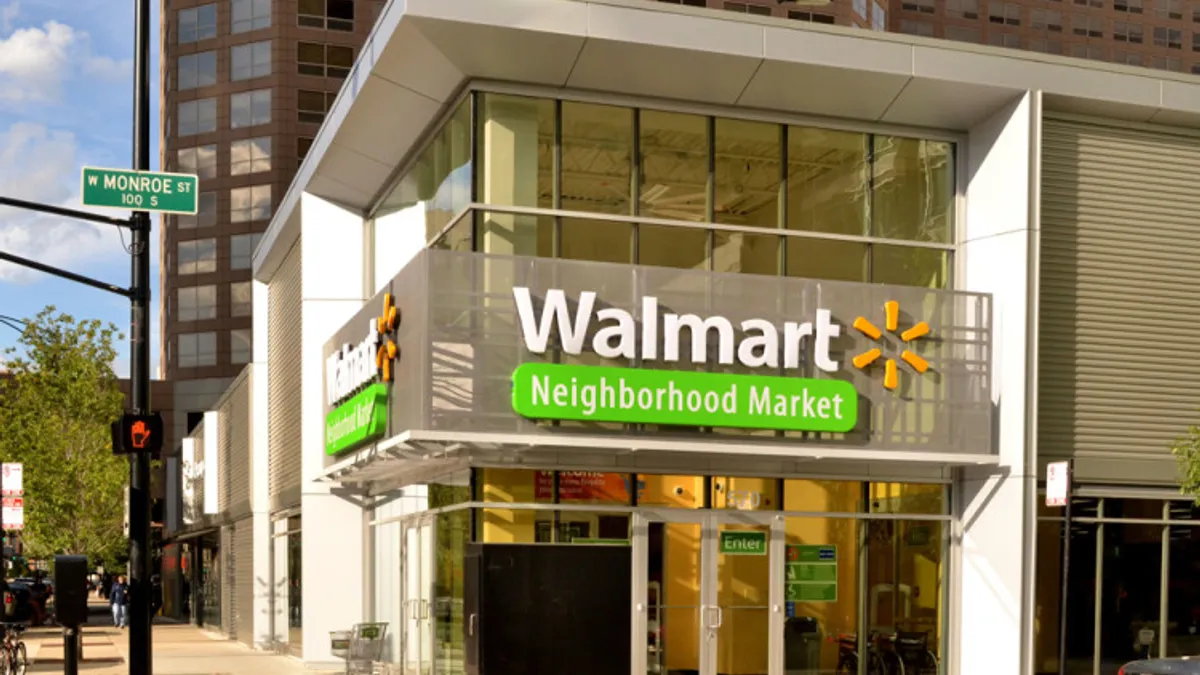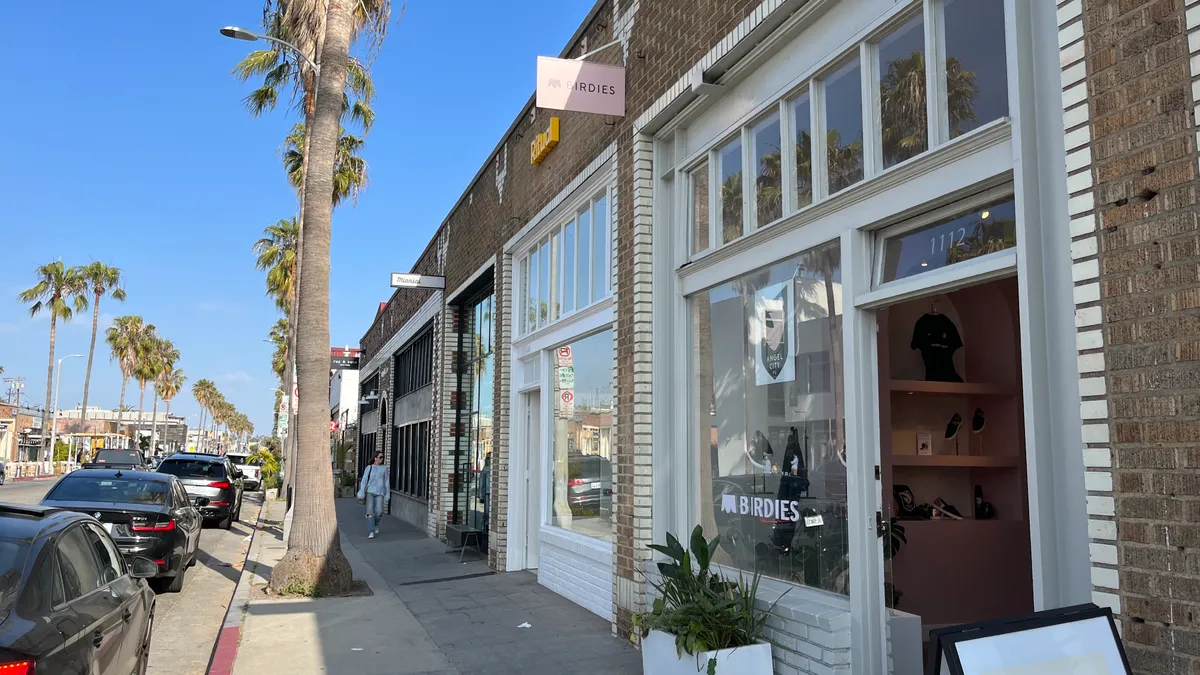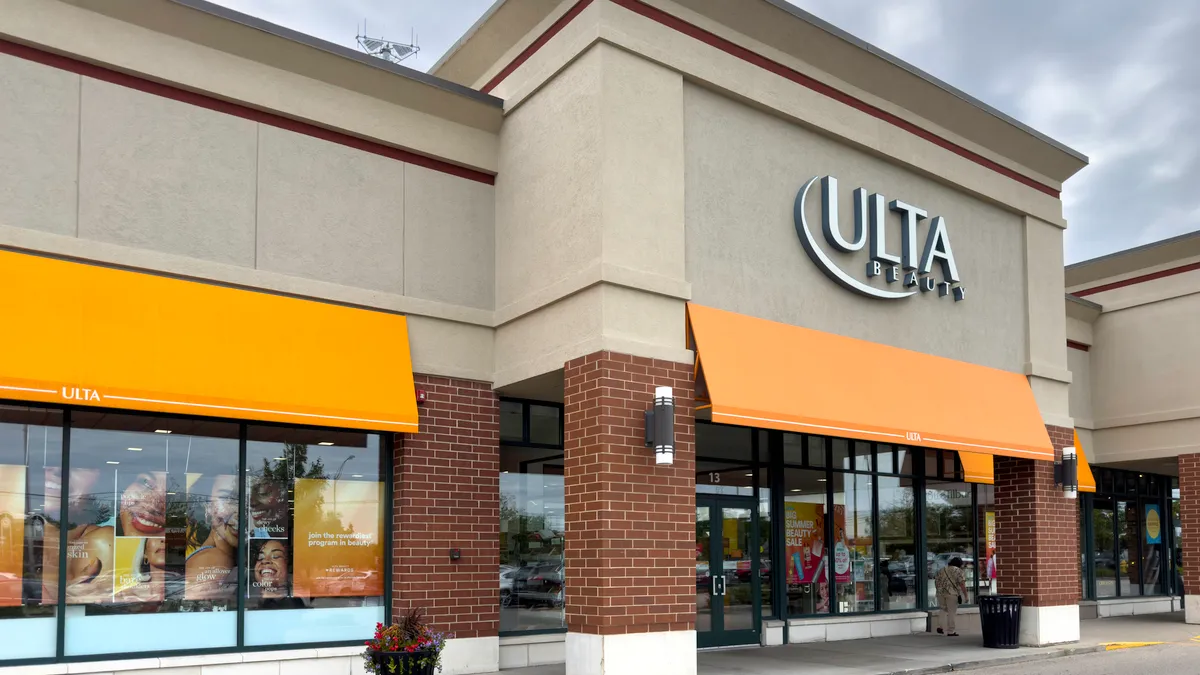Wal-Mart Stores Inc. last month announced that it would shutter 154 locations in the U.S., including the company’s 102 smallest format stores, Walmart Express, which the company said had been in pilot since 2011. Other closures will include 23 Neighborhood Market stores, 12 Supercenter stores, seven stores in Puerto Rico, six discount centers, and four Sam’s Club warehouse stores.
Meanwhile, though, the retailer also announced that other stores would open, both in the U.S. and worldwide. In the release announcing the closure, the retailer also said it would be opening 50 to 60 Supercenters in the U.S., along with 85 to 95 Neighborhood Markets, and seven to 10 new Sam’s Club stores; worldwide the company will open some 200 to 400 stores in the coming year.
And, the company said in its release that it “will focus on strengthening Supercenters, optimizing Neighborhood Markets, growing the e-commerce business and expanding pickup services for customers.”
These moves, among others, hint at Wal-Mart's future strategy for its stores—and if it has reached peak growth.
A time for change
The announcement in January followed remarks in October by CEO Doug McMillon, who said on a conference call with investors, “No doubt our business has become both large and broad. It is more important now than ever that we evaluate our portfolio.”
"We have closed stores across several markets and we will continue reviewing our fleet in a disciplined way and we'll close the stores that should be closed," he said. "We won't let the breadth of our business distract us from our most important priorities. But we don't believe in shedding assets in a hurry for less than they are worth. Value and timing matter. We are more than open to reshaping our portfolio but we will be smart about it.”
Apparently, that time has arrived. (Wal-Mart did not respond to repeated requests for input on this story.) For the most part, analysts welcomed the news that Wal-Mart is changing up its footprint after analysis and consideration.
"Net net, we like these developments and see them as part of increasing focus on quality (versus quantity) of Wal-Mart operations,” Stifel Nicolaus analyst David Schick wrote in a note to investors.
And Customer Growth Partners president Craig Johnson told Investor’s Business Daily that the move is “recognizing reality” and even overdue.
“Smart companies, particularly retailers, have to actively manage their fleet,” Johnson also said. “We always felt they should be doing a number of stores every year.”
The end of Wal-Mart’s ‘dollar store’ experiment
Indeed, agrees Howard Davidowitz, chairman of Davidowitz & Associates Inc., New York City-based retail consulting and investment banking firm, reviewing a store fleet in this way is a natural part of the retail business. But looking at Wal-Mart’s decision reveals a major shift from its previous strategy that does raise some questions, Davidowitz also told Retail Dive.
“It’s intelligent to close weak stores, that’s good management,” he said. "But part of it looks very strange to me and that is closing all their Express stores.”
Walmart Expresses were the 10,000 to 15,000 square foot stores that the retailer began opening in 2011 to compete with dollar-store chains and drugstore retailers in more residential and even urban areas. The idea was encouraged by previous CEO David Glass, says Davidowitz, who found that dollar stores were beating Wal-Mart even though Wal-Mart was beating them on price.
Now it's shutting down that experiment, in Davidowitz's view, before giving it time, perhaps to focus on reaching wealthier customers.
“It’s very mysterious that they’re closing stores in the best part of retailing,” says Davidowitz, who notes that the popularity of dollar stores is due to a marked decline in the middle class. "When you double the number of people in poverty, that’s why extreme value is popular."
In any case, with the closing of all Express stores, Wal-Mart is abandoning that experiment and will have to look elsewhere for growth.
E-commerce: Can Wal-Mart ever catch up?
While much has been made of Wal-Mart’s wage increases, which the company says will cost $1 billion, and how hard that will hit the bottom line, the company is spending even more to boost its e-commerce sales.
After spooking investors in October, Wal-Mart Stores allowed them a sigh of relief about a month later with a Q3 report that beat expectations. But e-commerce is proving to be a soft spot, with its e-commerce growth 10%, slower than previous reports, and well below Amazon’s 23% clip in the same period. The retailer has introduced omnichannel initiatives like in-store pickup, but experts have told Retail Dive that much of its omnichannel efforts might help drive more sales in brick-and-mortar stores than online.
So when it comes to e-commerce, Wal-Mart is in a pickle. Online sales are just 3% of its overall sales, and its online assortment pales compared to Amazon, which enjoys six times the online sales that Walmart.com does.
Plus, Amazon is getting stickier and stickier as it amasses a huge following via its Prime program, which rose 35% in 2015 to 54 million, or nearly half of all U.S. households, according to a report from Consumer Intelligence Research Partners released in January. Nearly three quarters (74%) of Prime members convert compared to 13% of non-Prime members, according to a study last summer from Millward Brown Digital.
While last June Wal-Mart announced it was piloting a $50 per year membership program called ShippingPass that provides free three-day shipping, just 12.4% of survey respondents said they were “likely” or “very likely” to sign up, inching up to 14.0% among the retailer’s most loyal shoppers, according to a study by Prosper Prosper Insights. (Notably, newcomer online retailer Jet recently dropped its own $50 annual membership fee in favor of opening its marketplace to all comers.)
Nick A. Egelanian, a retail expert at retail real estate services firm SiteWorks, doesn’t think it’s going to fly or that, even as it does boost its online sales, that e-commerce will be a major channel for growth for Wal-Mart. (He doesn't find its closure of the Express experiment as puzzling as Davidowitz does, either, in part because smaller stores may not fit with Wal-Mart's logistics.)
“Amazon’s customers more affluent,” Egelanian told Retail Dive. “If you‘re a family and you’re living from hand to mouth, these aren’t people who have the option to go and buy a membership for $99 a year. Wal-Mart is trying to get into a business with a different demographic, and the investment is enormous. I’m somebody who believes that you have to be really careful about that.”
Where can Wal-Mart go for growth?
So where is the growth story, for Wal-Mart? Certainly, its investors were alarmed when it announced dimmer prospects for growth into 2017. But perhaps its investors need to get used to a new idea of “growth” when it comes to Wal-Mart, Egelanian says.
“Wal-Mart is a very, very successful retailer, the most efficient distributor of goods in the world,” Egelanian said. “But they’re a mature company, and mature companies plateau. Does that mean you’re sick? No, it means you’ve hit a plateau, and you become a company that brings dividends instead of growth returns. Every business I’ve ever studied goes from growth to mature. You can’t grow anything forever.”






















